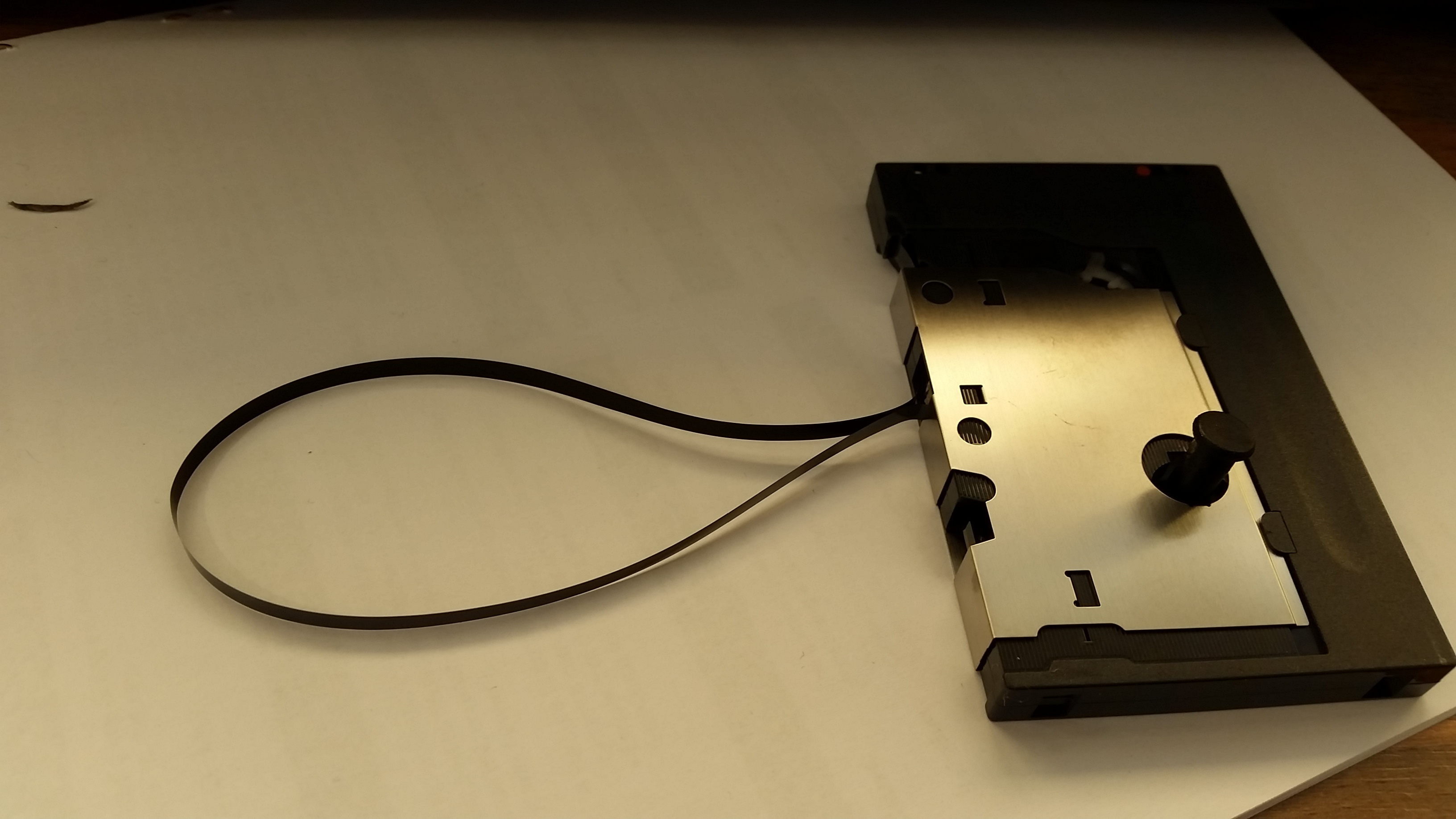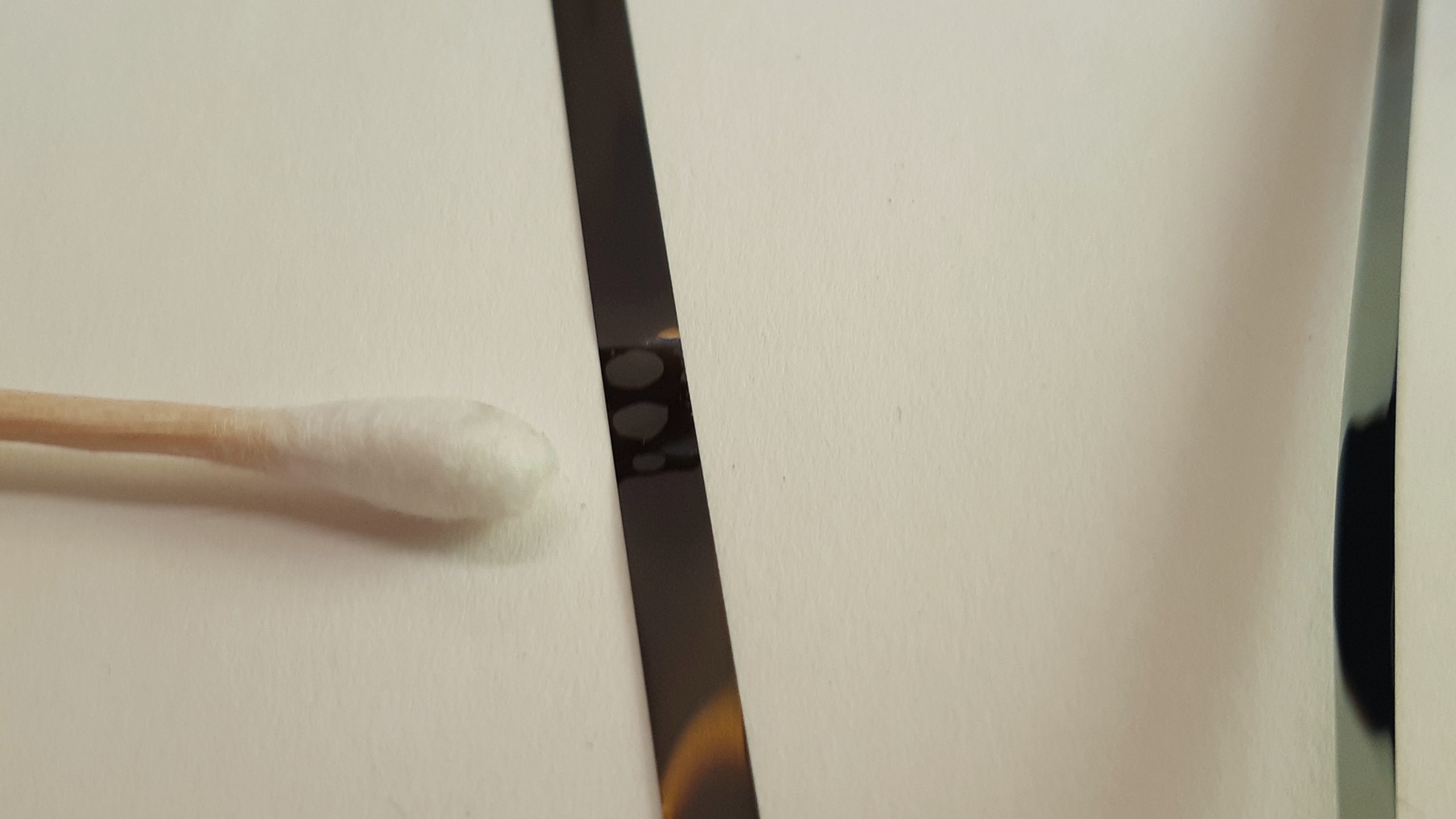When you receive one or more DCC tapes of unknown origin, you have to assume that they have not been used for a very long time. This means that you will have to treat them in a certain way, even before putting them in a deck or playing them.
Why, you ask? Because the tape has been sitting still in its shell for a long time in the position that it is in now. It has become deformed at the place where it is guided along the heads. And even worse, there is a sticky residu that has formed on the back of the tape where there are two internal felt pads inside the cassette. I am not talking about the felt that is opposite the head. These felts are inside and can not be seen, unless you break open the case, and this can not be undone.
These two felt pads have started to ‘leak’ a sticky oily substance onto the backside of the tape in the place where they touch the tape. That sticky bit will prevent the player form playing beyond that point, because well, let’s say it slips and cannot continue. It will either stop or go to the other side continuously. Until you fix this, the tape will be unplayable.
So now you know why you will always have to resist the urge to play them right away to hear what is on them, and follow this procedure.
The steps.
- So you will have to carefully pull the tape out. Be careful not to crease or rumple the tape, because that will surely create a dropout on that spot. To be able to do that first you must get the protective aluminium slider out of the way. Open it manually and place the wood part of a cotton swab into the round hole that has just opened up. It will fit almost perfectly and it will hold the slider open.
- Then, carefully pull out a length of tape of about 30 cm or more, making sure that you get tape from both reels. I use a pair of bent tweezers for that. Lay the tape flat on a white clean soft surface, like a piece of paper, with the shiny side down. The shiny side is the side that the DCC head touches, where the magnetic information is. But the gunk is on the backside. Lay the tape so that you are now looking at the matte back coated side. You may need to use some tools to hold the tape in place, I use two erasers, they are heavy and soft enough to hold the tape down.

- Now, and this is hard, look for some sticky residu. It will be hard to see, I use a desktop light and/or a handheld flashlight to find them. These patterns may also repeat at a ~10cm interval, so look up and down the length of the tape that you have pulled out the casing.
I tried to make a picture:
- Once you are able to see the problem area clearly, take a cotton swab and put some alcohol 96% on it and gently rub the backside of the tape. Do it gently as not to crease the tape. Rub very carefully but firmly up and down the length of the tape. Once you have done this a few times, you will get the hang of it. Make sure all the gunk is gone. Let the alcohol on the tape dry for a minute and check again and repeat if necessary.
- Once you are satisfied with the result, you should see an even back-coated surface with no spots on it, and you can carefully manually rewind the tape into the housing using a pencil or the end of the cotton swab or as I do with the tweezers. After the tape has been carefully stored back into it’s shell, only then you can remove the wooden stick and close the lid, not sooner.
- The tape has been cleaned, but the third felt pad (yes the one opposite the head) needs your attention now.
I can not explain it better then Ralf did in this video: https://youtu.be/m3DcMtor_Ck
Now you understand why it is vital to not wind DCC tape when you first handle them and not put them in a deck first, because the deck will spool the tape a bit and after that you will have a hard time finding the greasy spots.
The 2 felt pads will of course still continue to shed oil a little bit, so always rewind tape after use. You will never know when you are gonna use it again, could be years from now.
See also my older post: https://www.reeltoreel.nl/blog/?p=779
